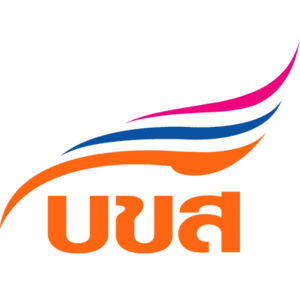Introduction to Transportation
From Mini Econ Batch 2 by Transport Co., Ltd. (BorKorSor)
Data as of July 11, 2002
Transportation refers to the movement of goods, animals, or people from one place to another. It includes the transportation of items or living beings that cannot move themselves (e.g., goods, animals) as well as the facilitation of movement for humans or passengers capable of self-relocation. In essence, transportation focuses on enhancing convenience and satisfaction in changing locations.
Key Components of Transportation
- Routes (Way)
- Stations (Terminal)
- Vehicles (Carrying Unit)
- Propulsion Systems (Motive Power)
1. Routes (Way)
Routes are foundational infrastructures enabling vehicles to travel between destinations. They can be categorized into:
1.1 Types of Routes
- Natural routes: Rivers, forest trails, mountain passes, and open skies.
- Improved natural routes: Enhanced natural routes like dredged rivers.
- Man-made routes: Includes elevated roads, underground roads, and tunnels through mountains or straits for vehicles or trains.
1.2 Ownership Rights
Routes may be publicly funded through taxes and fees, making them accessible to the public (e.g., roads). Private entities also develop toll roads and elevated highways, charging users for maintenance and operational costs.
1.3 Regulation and Control
Routes require proper traffic management systems, including signage and traffic rules, to ensure orderly usage. For instance, air traffic relies on radar systems, while roads use lane markings and signs.
1.4 Characteristics of Different Routes
- Roads: Public roads often connect with other transportation modes (e.g., railways, ports). They provide “door-to-door” service but require regular maintenance.
- Railways: Rail systems are efficient for large-scale transportation, though limited to fixed routes. High-speed railways can compete with air travel over long distances.
- Waterways: Rivers and canals are cost-effective but slow, suitable for heavy goods like sand and rice. Oceans allow for global trade and passenger cruises.
- Airways: Air routes are the fastest but the most expensive mode of transportation, ideal for time-sensitive cargo and long-distance travel.
- Pipelines: Used for liquids and gases, pipelines are efficient but involve high initial investment.
2. Stations (Terminal)
Stations are critical hubs in transportation, serving both passengers and vehicles:
Functions of Stations
- Refueling, servicing, and maintaining vehicles.
- Facilitating transfers between modes of transport (e.g., buses to trains).
- Organizing traffic flow for smooth operations.
Passenger Services
- Loading/unloading passengers and goods.
- Offering convenience for transfers and waiting times, including food, restrooms, and seating facilities.
Station Location
Stations should be conveniently located near communities or commercial hubs. They must balance accessibility with minimizing congestion and environmental impact.
3. Vehicles (Carrying Units)
Vehicles are mobile units equipped for specific transportation needs.
Key Considerations for Vehicle Design
- Suitability for the market and type of route.
- Compatibility with passenger/cargo volume and environmental conditions.
- Efficiency and cost-effectiveness through mass production.
Types of Vehicles
- Road Vehicles: Ranges from bicycles to buses, trucks, and private cars.
- Rail Vehicles: Includes trains for urban, suburban, or long-distance travel.
- Water Vehicles: Boats and ships designed for rivers, canals, or oceans.
- Air Vehicles: Aircraft for rapid and long-distance travel.
4. Propulsion Systems (Motive Power)
Propulsion systems power vehicles, varying by energy type (diesel, electric, etc.) and mode of transport.
Components of Transport Services
- Vehicles: Selection based on technical and operational needs.
- Routes: Proper usage rights and compliance with legal regulations.
- Stations: Facilities for contact and operations.
- Service Points: Mandatory stops for maintenance and rest.
- Personnel: Trained staff for vehicles, stations, and operational facilities.
- Transport Operators: Public, private, or contractual service providers.
- Regulations: Compliance with local and international transport laws.
Transportation Operators
- Public transport operators.
- Contracted or private transport providers.
- Freight operators and station managers.
Regulations and Legal Framework
Operators must comply with national and international regulations, such as vehicle registration laws and safety protocols, overseen by authorities like:
- Department of Land Transport.
- Department of Marine Affairs.
- Ministry of Transport.
Transportation systems are integral to mobility, commerce, and societal connectivity. The balance between infrastructure, operational efficiency, and regulatory compliance ensures sustainable and effective transport services. Let me know if you’d like more details on any section!
